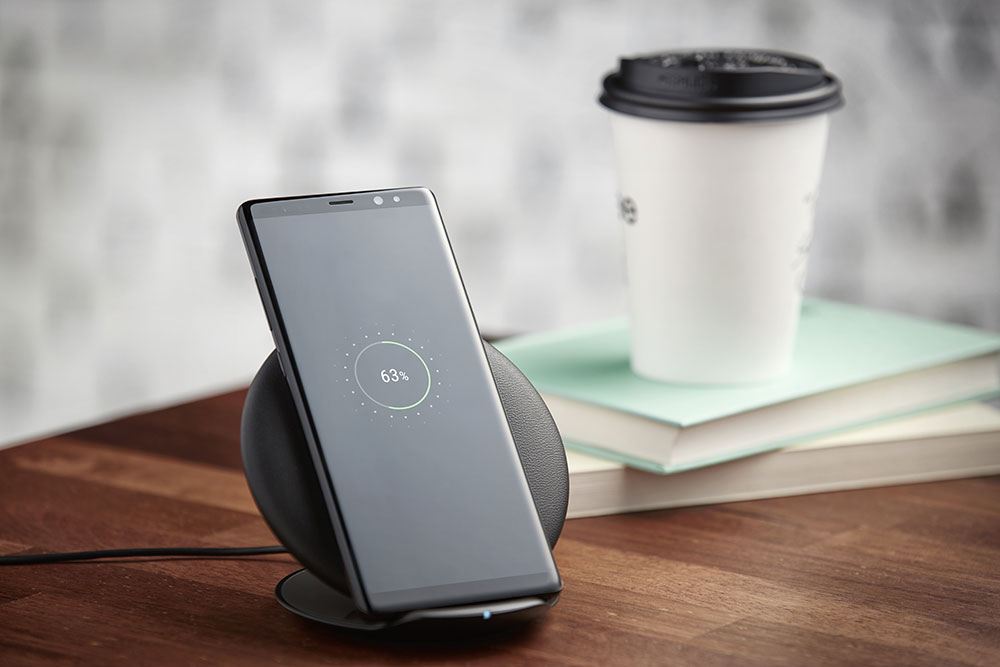Wireless charging is useful because all you need to do is place you phone on the charging mat and you’re done. There is no fiddling with cables and to charge it or to un-charge it, it’s just a matter of putting your phone down and lifting it up. In some cases, some charging mats are big enough where you can charge multiple phones at once, eliminating the mess of having many cables strewn about.
These days, wireless charging is available on most phones, but yet there are some models that do not come with them. If you own such a model, not to worry because there are actually several ways you can go about adding wireless charging to it.
Wireless Charging Receiver
Wireless charging in phones basically relies on the phone having a built-in wireless charging receiver. If your phone doesn’t have one built into it, you can always add one externally. Nillkin has several options that are available to you, and the best part is that they’re small and thin enough where you can actually use them together with a smartphone case. They are also considerably cheaper so if you don’t like it, you won’t have spent too much.
There are a couple of different connectivity options for users to choose from, such as micro USB, USB-C, and also Lightning for older iPhone models. There are also options for longer or shorter cables, depending on how big your phone is.

- Nillkin Wireless Charging Receiver Micro USB (Narrow side down)
- Nillkin Wireless Charging Receiver Micro USB (Narrow side up)
- Nillkin Wireless Charging Receiver USB-C
- Nillkin Wireless Charging Receiver USB-C (Short version)
- Nillkin Wireless Charging Receiver Lightning (iPhone “Plus” models)
- Nillkin Wireless Charging Receiver Lightning (iPhone non-“Plus” models)
Wireless Charging Case
If you don’t fancy the idea of using a wireless charging receiver, the alternative would be to get a wireless charging case. Basically, this is a case for your smartphone that comes with a wireless charging receiver built into it. This allows you to protect your phone and give it wireless charging capabilities at the same time.
Mophie actually offers quite a few options when it comes to wireless charging cases where there seems to be quite a lot of compatibility for the iPhone, but when it comes to Android, your options are considerably more limited. The upside to a wireless charging case compared to a wireless charging receiver is that they typically come with built-in batteries too, meaning that you can give your phone a boost in battery as well.

- Mophie Juice Pack Air (iPhone XS Max)
- Mophie Juice Pack Air (iPhone XS)
- Mophie Juice Pack Air (iPhone XR)
- Mophie Juice Pack Air (iPhone X)
- Mophie Juice Pack Air (iPhone 8, iPhone 7)
- Mophie Juice Pack Air (iPhone 8 Plus, iPhone 7 Plus)
- Mophie Juice Pack (Samsung Galaxy S10)
- Mophie Juice Pack (Samsung Galaxy S10e)
- Mophie Juice Pack (Samsung Galaxy S10+)
- Mophie Juice Pack (Samsung Galaxy Note 9)
- Mophie Juice Pack (Samsung Galaxy S9)
- Mophie Juice Pack (Samsung Galaxy S9+)
- Mophie Juice Pack (Samsung Galaxy S8)
- Mophie Juice Pack (Samsung Galaxy S8+)
Wireless Charging Pad

Once you’ve either chosen a wireless charging receiver or a wireless charging case, the last step you’ll need to do is get a wireless charging pad. There are plenty of such pads available out there, so you’ll need to make sure that your receiver or case is compatible with it. To date, most wireless charging accessories rely on Qi so just keep an eye out for that and you should be good.
You also need to pay attention to the power output that the charging pad offers, where some cheaper models might offer a lower output which means longer charging times. At the same time, there is also no need for you to buy a powerful charging pad if the receiver or case you’ve chosen doesn’t support such high output anyway.
How To Add Wireless Charging To Any Phone , original content from Ubergizmo. Read our Copyrights and terms of use.from Ubergizmo https://ift.tt/2ZPZJ5x

No comments:
Post a Comment